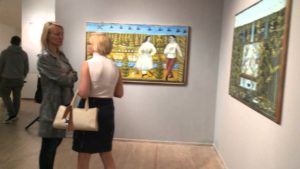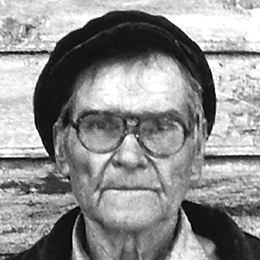
1920 - 2011
Pavel Leonov
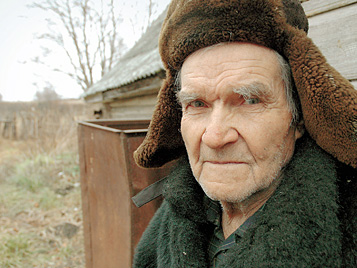
description
A Russian self-taught artist, one of the leading representatives of the older generation of naive artists. He was an author of more than ten personal expositions, was highly appreciated at the international exhibition Insita-1997 (Bratislava, Slovakia, Grand Prix), at the International Naive Art Competition Gallery Pro Art Kasper (Switzerland, 2000, Grand Prix). His exhibitions were successfully held in the USA (Gallerie Saint-Etienne, New York) and Germany (S. Zander Museum), in Amsterdam (Hamer Gallery) and Edinburgh (Ziv gallery). P. Leonov’s paintings were used in the film “Seraphim Polubes and other inhabitants of the Earth.” Films about the artist himself and his work were shot in 1998 (“Leonov and his wife Zina went out for a walk”, it received prizes of festivals in Belgium and Germany), in 1999 (“Leonov”, Netherlands), and in 2001 (“Leonov from Makhovitsa”).
Key ideas:
– Leonov’s paintings demonstrate features characteristic of naïve art, it is so obvious that they can be regarded as an example of this style. The artist uses the principle of the frieze-like composition, repeats significant elements, choosing their simplest forms, sometimes generalized to the level of the character-hieroglyph. As in archaic art, through planar details, he expresses the depth of vision, the power of experience, and the plot narration itself. This is peculiar to the traditions of not only Greece or Egypt, but also folk crafts, and fair lubok. In Leonov’s work, the qualities that are common for naïve art adopt the features of his individual artistic consciousness. Thus, his paintings have an inner world that is peculiar only to this author.
– The concept of Leonov projected into the future (his “Golden Age”) stands on two equal-sized pillars: the approach of time of universal justice and the triumph of “good” technical progress. At the same time, art historians do not see here the projections of the so-called communist myth, as can be assumed, knowing the years of the formation of the artist’s mindset. The golden age of the painter is his ideas and his coloristic element, with its incredible ability to turn cheap paints into jewels. Ocher becomes gold, strange violet and green hues on the figures and in the sky are felt like pearl; his favorite combination of yellow and black turns out to be festive. His sharp intuitive color sense that is, probably, beyond the consciousness of the self-taught artist, allows him to achieve the harmony of sense and colorful expressiveness.
– In general, Leonov’s style is characterized by the combination of small and big figures. The division of the work into separate squares, each of which shows different themes, is one of the essential merits of the master. His special sense of rhythm and ability to arrange color spots in the space of the painting so that the entire surface was “caught”, as if surrounded by lines of force and turned into a monolith, is like hypnosis for a viewer. Animalism is also attractive in this regard – the author includes the world of animals in the human world with no visible distance between them, emphasizing attention to the life of our small friends.
– The whole extraordinary image system has its own Leon mythology, in which the heroes (Leonov himself, his Zina and Turgin), central and symbolically significant events (arriving to the war or to the carpentry shop), and also gods are clearly identified. To be more precise, the goddesses-bathers, who, staying beyond the time and in eternal pleasure and joy guarantee the fullness of the past or future golden age.
1920
1937 - 1942
1942 - 1945
1946 - 1960
1968 - 1970
1970
1980
1990
2000 - 2001
2005
2006 - 2010
2011
The artist was born
After the conflict with his father, he left his house
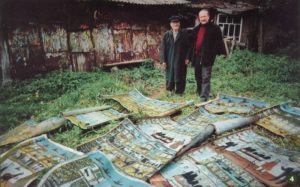
Studied at the Baku Higher Combined Arms Command School
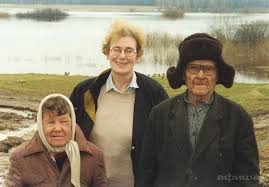
Worked at the artel, then at the mine in the Rostov region
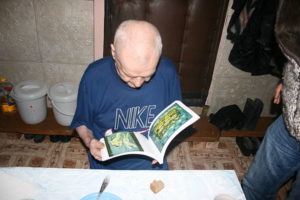
Entered the Distance Learning People's University of the Arts
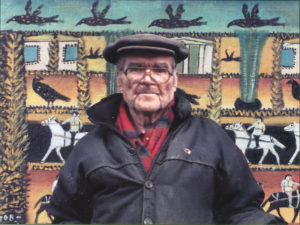
Participated in the anniversary exhibition of the Distance Learning People's University of the Arts in Moscow
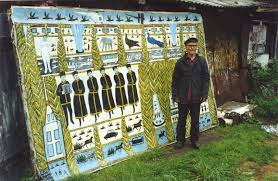
Participated in the exhibition “50 years of the Distance Learning People's University of the Arts”
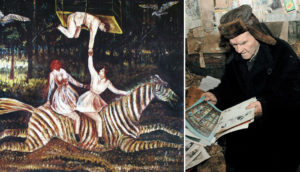
The most fruitful period of his art
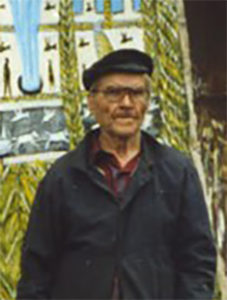
The Grand Prix
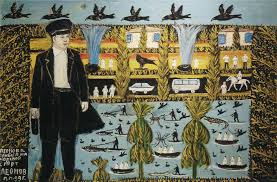
“Pavel Leonov”
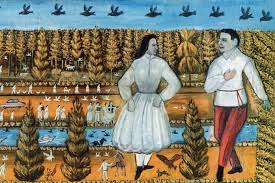
His wife Zina passed away
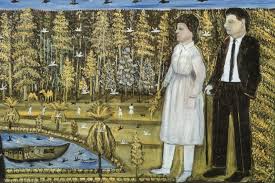
The artist died
